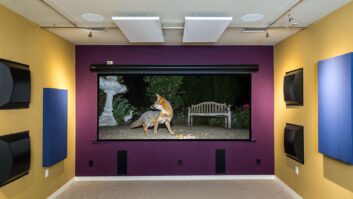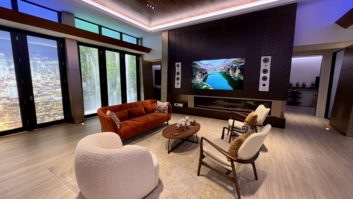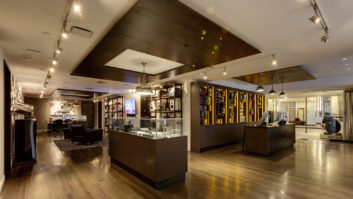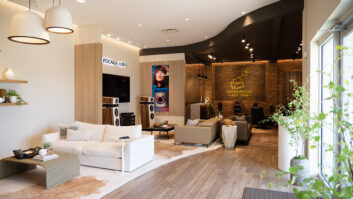The World of McIntosh experience center in downtown NYC was a site to behold and a treat to listen to. Built in a power station-turned-warehouse-turned townhouse for a movie producer, the World of McIntosh hosted many events and film shoots, in addition to providing extremely high-end sound system demonstrations.
However, once the pandemic hit, the event business ground to a halt and even dealers were unable to get customers into the space, which still had a hefty rent to cover despite its lack of use. McIntosh decided to let that place go, with the intention of building a new experience center once the world opened back up.
Good to its word, in September the company unveiled the House of Sound, which takes a townhouse in NYC’s Chelsea neighborhood and fills it with brands from the McIntosh Group — including McIntosh, Sonus faber, Rotel, Pro-ject Audio Systems, and Sumiko Phono — to create a series of real-world listening environments.
“The whole purpose of the house is to show people what they can build at home — the space is not tuned like a studio,” says Ricardo Miranda, audio experience manager at the House of Sound. “We’re able to show people the products in ways that they couldn’t experience in a dealership. You’re in a place that is a real working home.”
A home with a famous previous tenant in basketball star Kevin Durant, now with the Phoenix Suns, but who lived in NYC when he played for the Brooklyn Nets from 2019 through 2023.
Taking It From the Top
The roof of the five-story townhouse offers some nice views of the city, and even New Jersey on a clear day. It also offers a unique perspective of the oddly shaped Dream Hotel, which features what look like large portholes for windows across its large metallic side.
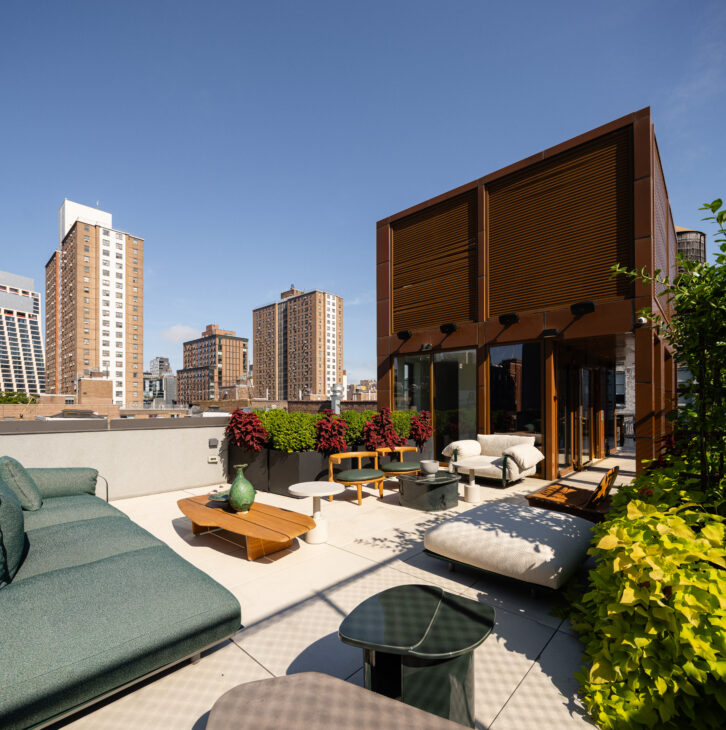
Accompanying those views are three sets of Sonos faber Aster indoor/outdoor architectural speakers, powered by a McIntosh MI128 8-channel digital amplifier, which offers ample sound for the open-air space.
One floor down is what Miranda calls the worst-sounding room in the house. “This room has half of a wall, a big mirror behind the speaker, and a wall of large glass windows,” he says. “This is the worst-sounding system in the mechanically worst room in the house — and it still sounds really good. It shows that you don’t need the perfect space to enjoy your experience.”
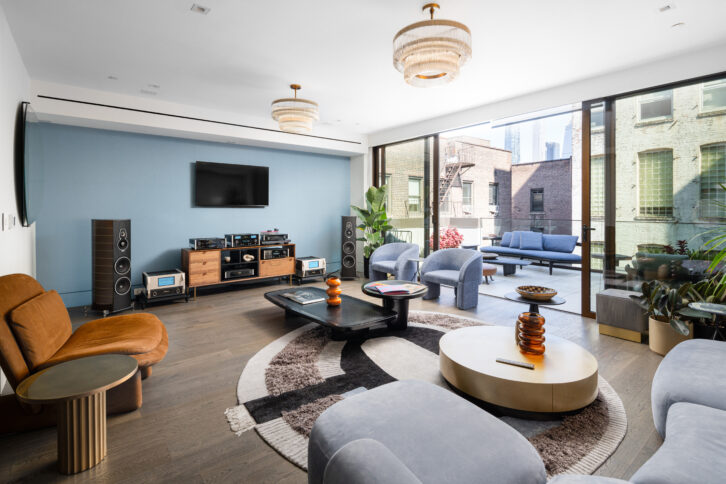
It helps that this area has a system that is just under $100,000, not including stands or cables. This room has a McIntosh MT5 precision turntable and an MCD600 2-channel SACD/CD player going into an C2700 preamp. From there, the signal goes out to two MC3500 1MK II 1-channel vacuum tube amplifiers, which feed a pair of Sonus faber Amati G5 tower speakers.
“The MC3500 MKIIs are beautiful machines, especially around the back where the tubes are,” says Miranda. “Plus, there are two major technologies that make McIntosh amplifiers better than other amps: One, it’s physically impossible for the amp to clip — they will never distort in a way that isn’t supposed to be there. And, two, our amplifiers don’t short out.”
Going down another flight, users will experience a pair of 2-channel listening spaces. “These two rooms are a lot closer to what an average listening room would be — especially if you’re in a suburban or city environment,” says Miranda. “They’re each 10 feet by 13 feet, with two big chairs opposite the sound system.”
The first one features mainly gear from Rotel —P5 Series 2 preamp, S5 stereo power amp, DT6000 CD player, and S14 streamer. It also has a Pro-ject X8 Evolution turntable. The speakers are Sonus faber Olympica Nova IIIs.
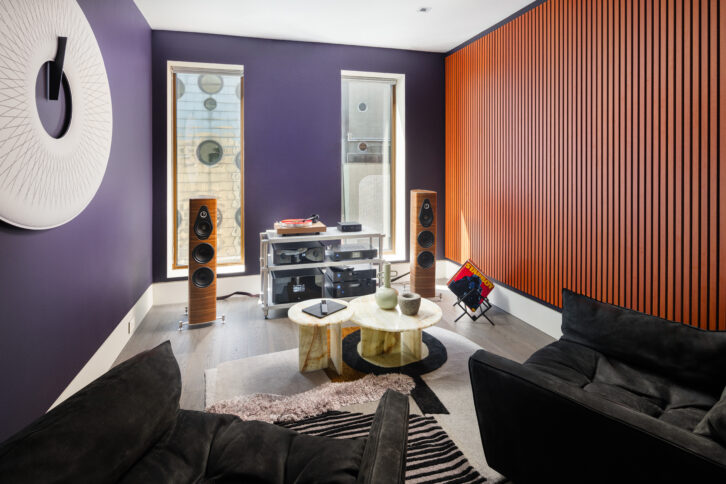
“There are $13,000 worth of separates in that room,” says Miranda. “Every single analog and digital input you could possibly want is in there. It has a really good phono moving coil and moving magnet phono stage. It is a dual differential 8-channel DAC, so each channel is getting eight times oversampling.”
The second room holds a $40,000 system and features the McIntosh MA12000 2-channel hybrid integrated amplifier and Sonus faber Electa Amator III solid walnut bookshelf speakers.
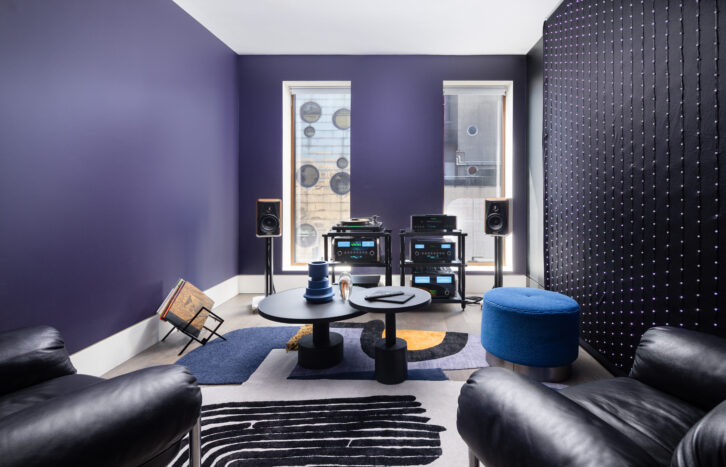
And as cool as all that gear is, Miranda is also impressed by the HRS stands that hold these systems. “These stands are insane,” he says. “We had our photographer come in to shoot the house, and when he was shooting these rooms, he says, ‘Hey, the stands are crooked.’ They are equidistant from the wall on both sides and exactly measured to be where they are, but they did look crooked.
“As it happened, I had a training with HRS that evening and the first thing that the owner of HRS said was, ‘We just got our patent today on audio stands with no parallel lines.’ As soon as he said it, I got it, because if you don’t have parallel lines, the triangles you are forming are physically much more stable than squares.
“When I told him about the photographer, he said that every photographer sees it immediately — for normal people, it takes a minute. When you look at the stands, all the legs are in a different spot in the quadrants. It’s very cool.”
The next stop on the tour goes back to the first-floor lobby where you enter the building. At the back of that space is a nondescript white door that leads into a surprisingly large home theater.
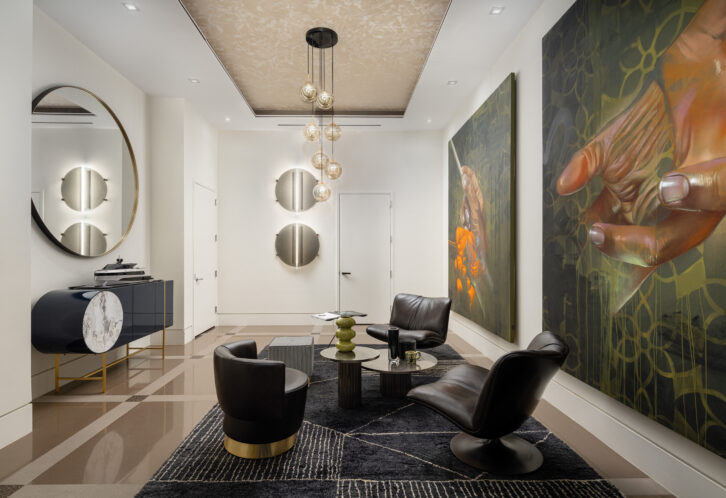
“This room was a theater before we moved in here,” says Miranda. “Once again, this is not an extensively treated room. You can see light and feel air coming in from underneath the door. It’s not a sealed room, but that doesn’t matter.”
The room holds a 9.16.4-channel Dolby Atmos theater with a 204-inch projection screen and a laser projector. On the audio side, there is 15,400 watts of Macintosh amplification and 29 Sonos faber speakers, 16 of which are subwoofers.
“Of the 16 subs, 10 are in the front and six are in the back of the room — three each behind the two rear chairs,” says Miranda. “We’ve taken the audio signals going to the nine program speakers and then timed it into the subwoofers around the room. There are four front subs that provide the LFE channel.
“You can feel all the low end coming out of these subwoofers, but the whole point of this room is precision and the ability to precisely place objects in the world. You’re able to get a complete sonic image from lower than you can feel to higher than you can hear that is precisely directional.”
The Main Event
The final spot on the tour is up a few flights and is the biggest listening room in the house, with the most expensive system.
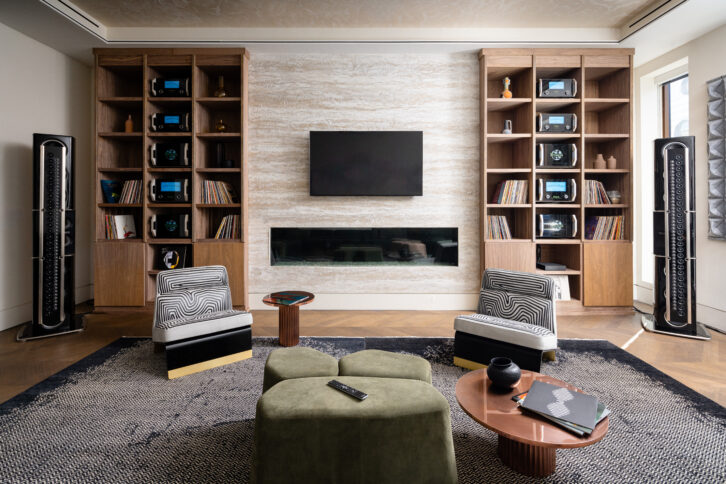
“Every single component in this system is the best component McIntosh makes,” says Miranda. “Starting from our sources, we have the McIntosh MT10 $10,000 turntable and the MCD12000 2-channel SACD/CD player. The digital side is going out to the C12000 preamp, which is a two-unit preamp. All the signal processing happens on the top, so all the inputs and tubes are there. The microprocessor for volume control and power input happens on the bottom. The result is it is much quieter with less distortion and interplay between those components as they don’t need to interact.
“From there, we go out on each side to an MC2KW mono block, which is made up of three boxes. Then that’s going out to the XRT2.1K floorstanding speakers.”
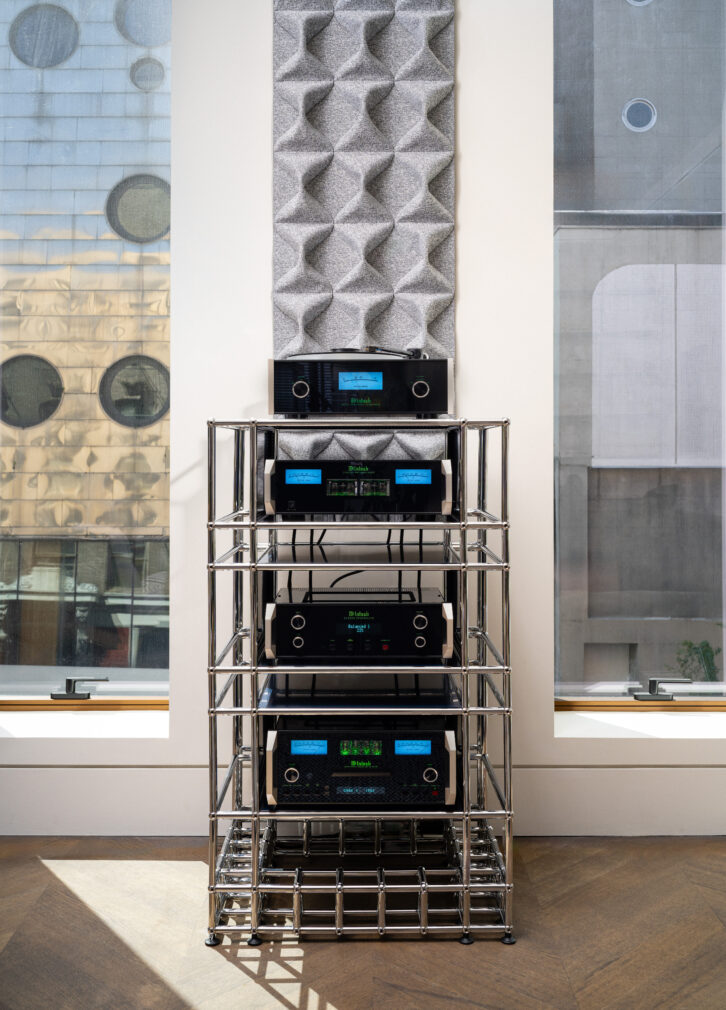
Just looking at the speakers tells you they are different from what you typically have experienced. They are tall — 83-7/32 inches including the feet — and have 45 3/4-inch tweeters running down the front, covering them fully from top to bottom.
“On the tweeter side, these work exactly like a rowing team,” says Miranda. “Everybody’s just doing a little bit of work to create a huge mechanical advantage. Each of these tweeters is only seeing about 3/4 to 1 watt of power, which means none of them are ever going to be overworked. The big advantage of having them arranged in this way is that, the closer you get to the speaker, the less drivers your ears are receiving energy from, so you get the same relative volume no matter where you are in the room because you’re only receiving energy from a certain amount of the speakers. No matter where you go in the room, you’re going to get the desired soundstage.”
It is easy to test that theory in the sizable room — and it is astounding to have the system volume cranked up but remain steady as you approach the speaker from the back of the room.
It is an otherworldly sound system in a real-world space.
To make an appointment and experience it for yourself, visit houseofsoundnyc.com/audio-tours.
